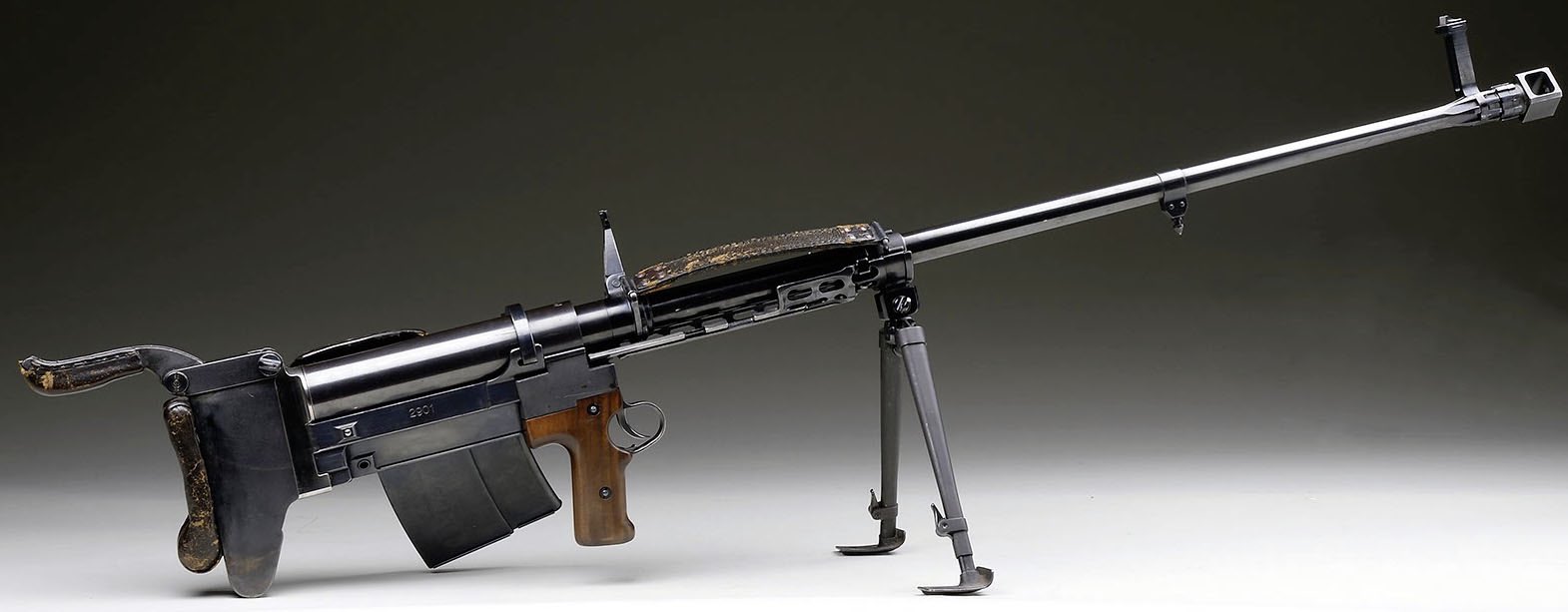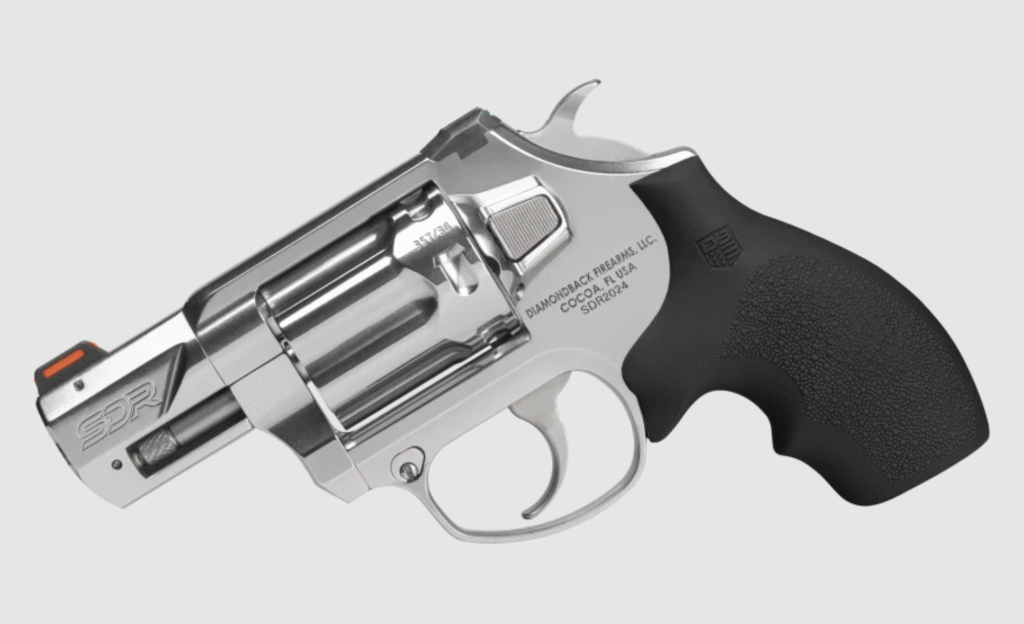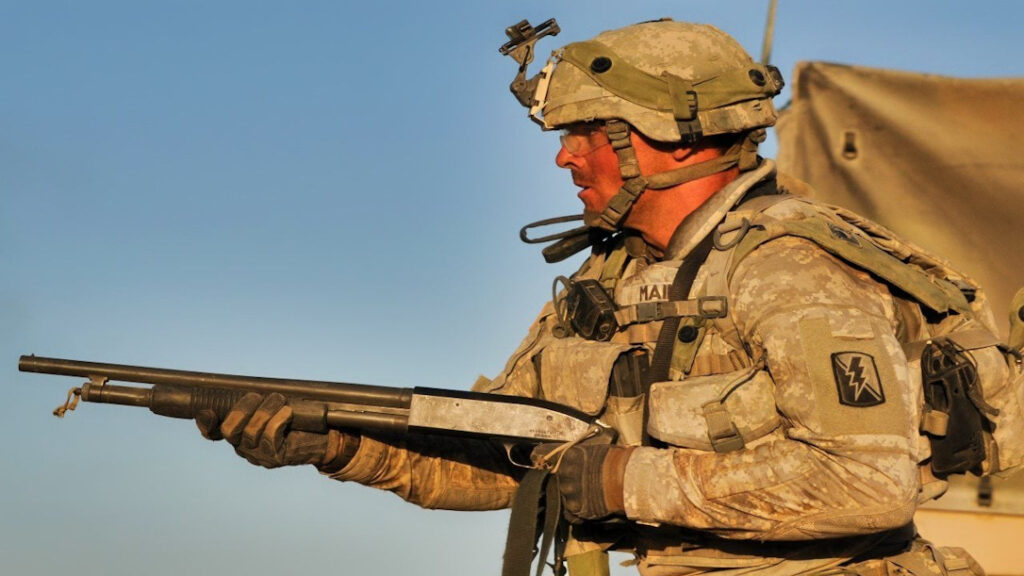Bullpups aren’t all that uncommon these days. No one sees a bullpup and goes oh wow, that’s revolutionary. Guns like the Steyr AUG might have been revolutionary in their day, but they’re old hat now. In studying the history of bullpups, you’ll find plenty of experimentation with the idea going back to 1860 and bench rest target rifles. Declaring one to be the first is a bit tough to do, but we can track down which was the first to ever see combat. The first bullpup rifle to see combat was an oddity all the way around. Even the name—PzB M.SS.41—is odd.
The PzB M.SS.41 – An Oddity
The country of origin and who used the gun is odd, the design is odd, the caliber is odd, and odd is today’s word of the day. The Czechs designed the PzB M.SS.41. That’s not a big surprise because Czech small arms have always been creative. It was Josef Koucký. If that name sounds familiar, he was one of the lead designers of the CZ 75 handgun. While Czechs designed the gun, it was used by Germany in World War II.
The design dates from the 1930s and is an updated version of the PzB M.SS.38. When the Germans occupied Czechoslovakia, they took over the CZ factory in BRNO and began producing firearms for the German military. This is where the Germans got their hands on the PzB M.SS.41. These rifles, and others like them, were originally invented in World War I as anti-tank weapons.
Advertisement — Continue Reading Below
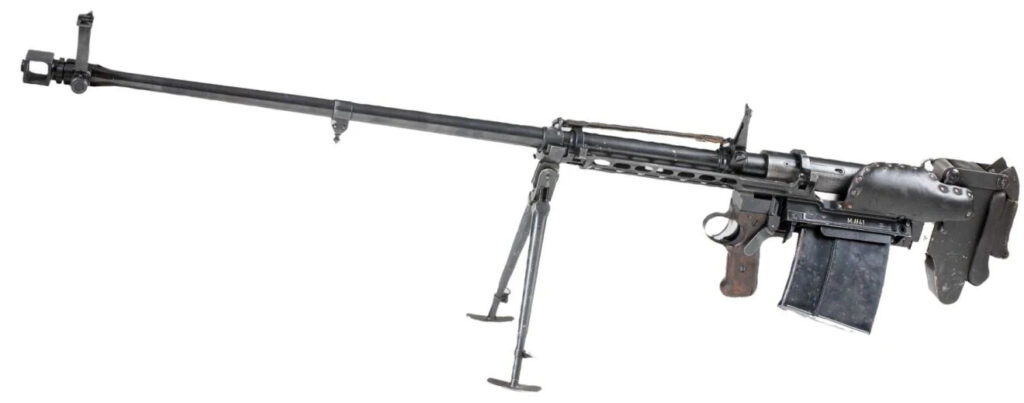
Anti-tank rifles weren’t uncommon. In the 1930s, powerful anti-tank rifles like the original Model 38 or the Boys Anti-Tank rifle could easily penetrate a tank’s armor. Anti-tank rifles were massive, heavy, and crew-served guns. The Czechs wanted a rifle that a crew of only two people could operate.
Most of the world’s anti-tank rifles utilized fairly large projectiles, which we’d describe as anti-material rifles. The Germans used a very fast 7.92 mm projectile. The 7.92×94 Patronen cartridge allowed the PzB M.SS.41 to be lighter than most rifles, and when mixed with the shorter bullpup design, it was easy enough for a two-man crew to manage. Initially, there was no SS in the gun’s name, and it would have likely been called the Model 41.
Advertisement — Continue Reading Below
Then the Germans Came
When the Germans took the factory, the rifle appealed to the SS, which used a wide variety of weapons since it was outside of the typical armed forces command structure. The SS already had the 7.92 Patronene cartridge in its supply chain. For the often oddly armed SS, the PzB M.SS.41 must have seemed like an excellent coincidence to find. After the SS adopted the rifle, it became known as the PzB M.SS.41.
The rifle had more appeal than just the caliber. The modern anti-tank rifle of German forces was the Panzerbüchse 39, but the SS couldn’t get many of those in their armories. Plus, the PzB 39 was a single-shot rifle that was over 63 inches long. The PzB M.SS.41 was a bolt-action, magazine-fed rifle that was 53.5 inches long. Weight-wise, it was only a pound heavier than the PzB 39.
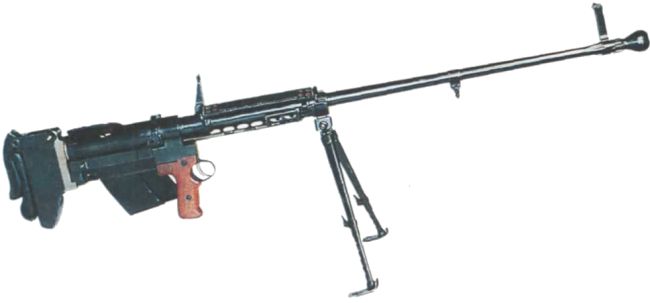
Advertisement — Continue Reading Below
If you’re an infantryman tasked with targeting an armored vehicle with a rifle, I’d also want a repeating option rather than a single-shot design. The rifles were mainly used on the Eastern Front, where they became known as the first bullpup to see combat. The weapon was used for a brief period in an anti-armor role.
As tank armor improved rapidly, these weapons became less useful, and by 1942, the SS declared rifles obsolete. They may have stuck around dealing with light armor or entrenched positions, but the SS stopped producing them in 1942.
The PzB M.SS.41 Operating
Remember, odd is the word of the day. This bullpup bolt-action rifle uses a fixed breach, and looks as long as you want. You won’t find a bolt handle. Instead, the pistol grip is the bolt handle. It unlocks the system, and the entire barrel moves forward and rearward to extract, eject, and reload the next round. The barrel rides on rollers to keep the action smooth and quick.
Advertisement — Continue Reading Below
The magazines were detachable and came in five- and ten-round varieties. Behind the pistol grip sat the magazine catch, a simple single-stack design. An interrupter design unlocked the first round, allowing the barrel to move rearward to pick up the cartridge from the magazine.

The sights were side-mounted so the right-handed shooter could use them while operating the enormous rifle. The sights also folded, likely helping to ensure they didn’t snag and break. Small features like a leather cheek pad and a recoil pad helped increase the gunner’s comfort. A bipod was necessary for the 28-pound rifle. A massive muzzle likely spared shoulders, and there were even provisions for a sling.
Advertisement — Continue Reading Below
The barrel could be easily removed from the receiver, significantly reducing the gun’s weight and size. A team of two men could move across the battlefield with the weapon broken down and assemble it when they reached their final position.
Overall, the rifle had all the Czech creativity you’d expect. These weapons were reportedly very well made, and while they were quickly out of date, they showed innovation. It’s arguably the peak of man-portable anti-tank rifle technology. Sadly, the SS used the rifles rather than the Czechs using them against the SS.
